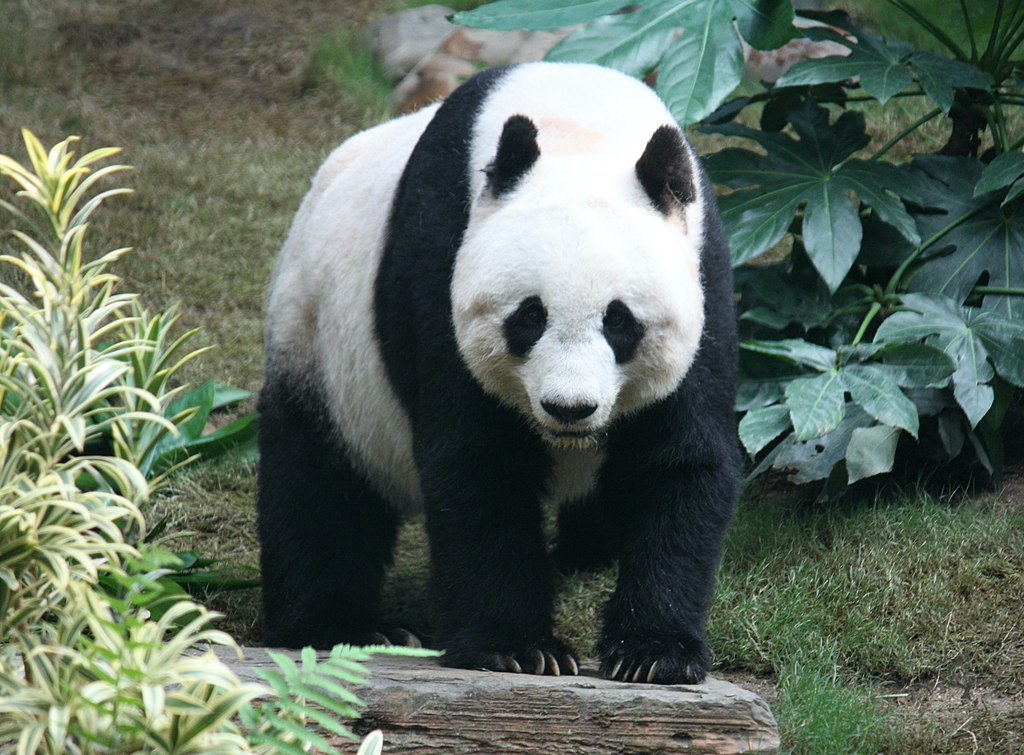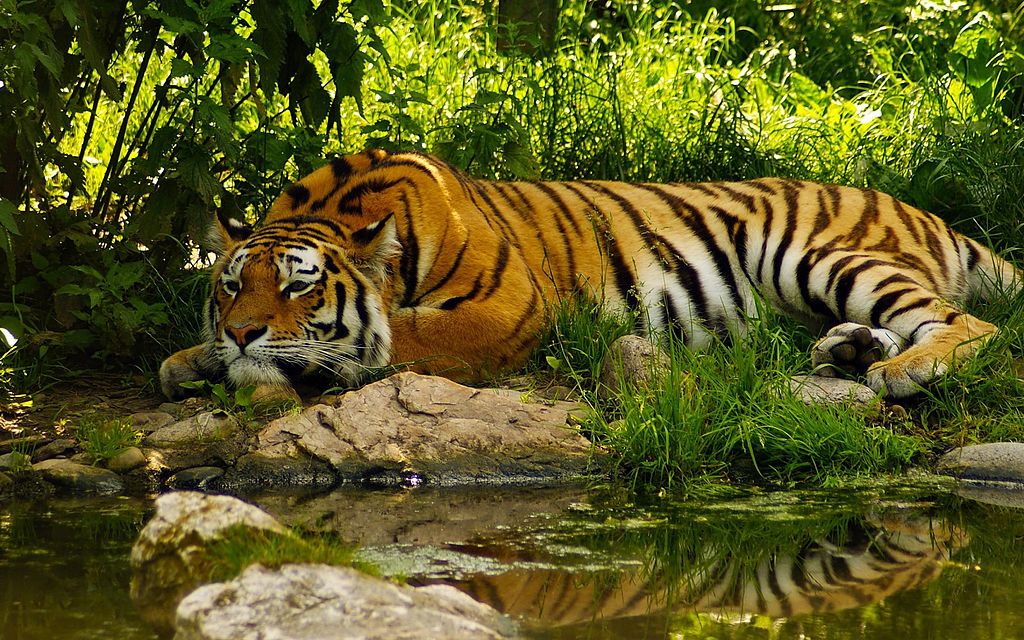Endangered and threatened species are facing the real possibility of extinction. Keeping track of them is the International Union for the Conservation of Nature (IUCN), which, along with allied conservationists across the globe, is working against time to combat threats to their survival.
◊
The world is home to myriad species that are under pressure to survive and thrive in the rapidly diminishing wild. These are referred to as threatened and endangered species. The situation is so concerning to conservationists – and has been for decades – that many governmental and nongovernmental organizations, including such notable groups as the World Wildlife Fund, are actively trying to save as many species from extinction as possible. These efforts are pursued on many levels around the globe, as documented in the MagellanTV six-episode series Saved from Extinction.
One of the first international organizations to bring attention to the plight of endangered species was the International Union for the Conservation of Nature. The IUCN formed in the years after World War II with a mission to enumerate, protect, and aid the many species whose habitat and lives have been threatened by human action over the years.
Among the most valuable tools the IUCN has devised is the “Red List of Threatened Species,” basically a checklist of species survival and loss. This list charts hundreds of thousands of species and is divided into numerous categories, all the way from “Least Concern” to “Extinct.”
A List for Threatened Species
The “Red List” promotes a simplified way of looking at threatened species. There are many designations for levels of threat (and safety), and the categories displayed below pertain only to threatened species. The short list groups species that are extant but have some inherent risk attached to their ability to survive and flourish. This is the spectrum known as “conservation status,” a ranking that denotes the level of threat (of extinction) for any given species:
- Near Threatened: species close to qualifying for designation as threatened;
- Vulnerable: high risk of extinction in the wild;
- Endangered: very high risk of extinction in the wild;
- Critically Endangered: extremely high risk of extinction in the wild.

(Credit: J. Patrick Fischer, via Wikimedia)
_(1).jpg)
Each category has specific criteria for placing species on the Red List, but the basic criteria to be considered threatened are:
- Reduction in population and/or geographic range;
- An overall (and declining) wild mature population of 10,000 or fewer;
- A perceived probable threat of extinction of at least 10 percent over the next 100 years;
- Breeding success rates in species’ natural habitat;
- Known threats to survival (e.g., hunting, deforestation, poaching, loss of habitat).
Animals on the Endangered List
Beyond the relevant criteria to be listed as threatened, the Red List includes several well-known creatures. The selective list below notes the specific status of these animals as well as some of the reasons they are currently at risk:
- Giant Panda – Vulnerable: loss of habitat and lack of natural resources to survive;
- Snow Leopard – Vulnerable: hunting, poaching, and overhunting of its natural prey species, including the blue sheep and the ibex;
- Tiger – Most species are endangered: loss of habitat due to agriculture, and human development and poaching;
- Blue Whale – Endangered: Historically, whaling reduced the number of this largest animal to a current number of fewer than 25,000 worldwide; a major current risk is entanglement in fishing nets.
_(16108163937).jpg)
(Credit: Greg "Slobirdr" Smith, via Wikimedia)
- Asian Elephant – Endangered: Poaching for ivory, meat, and skin is this animal’s biggest threat.
- Sea Otter – Endangered: In the 19th century, these animals were driven to near extinction by the fur trade; now, with only about 100,000 remaining, the biggest threats to them are predation by other sea creatures and human activity such as oil spills.
- Gorilla (Eastern and Western) – Critically Endangered: habitat encroachment as well as poaching for meat and trophies; because of the unique social structure of these apes, the loss of even one gorilla from a group can drastically affect life among the rest of the troop.
- Orangutan (Sumatran and Bornean) – Critically Endangered: loss of native habitat due to logging, as well as poaching and capture for the exotic pet trade.
What You Can Do to Support Endangered Species
As detailed above, species-wide extinction threats can arise from many causes; however, the No. 1 reason is undoubtedly human activity. Whether the risk is direct, as from hunting and poaching, or indirect, such as loss of natural habitat, humans pose the clearest and most present danger to the health and sustainability of animal populations.
_(25169790524)_crop.jpg)

(Credit: Mike Baird, via Wikimedia)
As individuals, most of us don’t have the resources or training to halt the dramatic reduction in certain animal populations around the globe. But we can focus our attention on this problem in order to make informed choices about how we can best support the work of conservationists.
Resources for Endangered Species
Here are a number of the most important nonprofit organizations that are bringing attention to threatened species around the world. Read up on these groups and their valuable work to save vulnerable flora and fauna and to inform us of the existential dangers faced by many types of wildlife.
- IUCN (International Union for Conservation of Nature) http://www.iucnredlist.org/ This searchable database offers significant information to professionals – scientists, conservationists, researchers – as well as to the public.
- CITES (Convention on International Trade in Endangered Species) https://www.cites.org/ CITES resulted from an international agreement between governments to ensure that the legal trade of wildlife specimens between countries does not damage the overall health of these species in the wild. It subjects participating countries to inspections and licensing of trade. In addition, CITES produces reports on the import and export of species, and on the introduction of non-native species into new environments where their presence could threaten native animals and plants.
- WWF (World Wildlife Fund) https://www.worldwildlife.org/ Due to their effective public outreach campaigns and their very well-known logo featuring a stylized great panda, the WWF is the best known of these conservation-minded organizations. It sponsors initiatives that range from fieldwork to corporate partnerships to efforts to “conserve nature and reduce the most pressing threats to the diversity of life on Earth.” The WWF also promotes a wide variety of opportunities for individuals to get involved, ranging from “symbolically adopting” endangered animals to participation in “conservation travel” tours of many countries.

(Credit: Vanisri874, via Wikimedia)
The Future for Endangered Species
Many of the animals mentioned above face an uncertain future. Only time and concerted, long-term action will reduce the threat of extinction faced by these and other creatures around the world. But there is good news too, symbolized by the many governmental and nongovernmental organizations involved in animal conservation. And you can join the fight, with an action as simple as clicking a link.
Ω
Kevin Martin is Senior Writer for MagellanTV. He writes on a wide variety of topics, including outer space, the fine arts, and modern history. He has had a long career as a journalist and communications specialist with both nonprofit and for-profit organizations. He resides in Glendale, California.
Title image: Royal Bengal Tiger. (Credit: Vanisri874, via Wikimedia Commons)
Editor's Note: This article was orginally published in April 2019. It has been updated with new text, images, and links.

